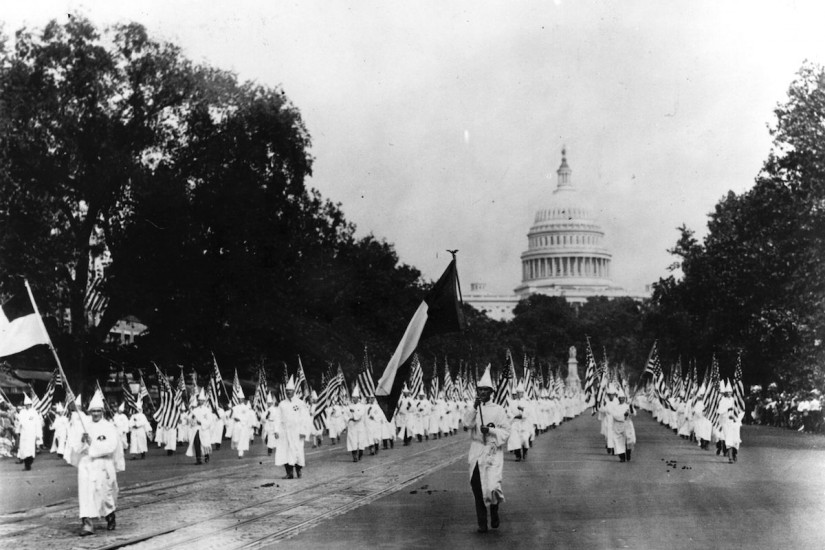If the Klan’s close relationship with the institutions of Protestant Christianity helped to cement its claim to mainstream American culture, so too did its ties with capitalism. Though it claimed to serve as the champion of ordinary working- and middle-class whites against the “elites,” the Klan rarely if ever targeted individual businessmen or the growing power of corporations. Instead, in keeping with Calvin Coolidge’s famous maxim that “the chief business of America is business,” the organization strove to present itself as a business-friendly enterprise. By 1922, for example, the local “klavern” in Madison, Wisconsin, advertised itself as “the Loyal Businessmen’s Society.”
The Klan also proved to be a rather successful capitalist enterprise itself: It not only opposed communists, socialists, and other “un-American” radicals; it also turned a tidy profit. Founded in 1915, the second Klan went largely unnoticed until its leader effectively turned the organization over to public-relations professionals. With a contract that guaranteed “an astonishing 80 percent of any revenue brought in from new recruits,” the Southern Publicity Association had ample incentive to help the Klan spread across the country. Klan recruiters, known as “kleagles,” worked on commission, keeping $4 of each $10 new initiation fee for themselves and kicking the remainder up the ladder. The entire enterprise was, Gordon notes, one more pyramid scheme in an era already teeming with them.
The initiation fees were only the start. Klansmen paid annual dues to their local klavern, plus a yearly tax to the national headquarters. Members had to purchase a “Kloran,” the handbook of Klan codes and rituals, as well as robes and hoods from the organization. “Not coincidentally,” Gordon notes, “the costumes were designed so that wives could not hand-sew them. The headgear and Klan insignia had to be just so, which made the members want the real, manufactured object.” There was plenty more that members could purchase, ranging from a “Kluxer’s Knifty Knife” to a “zircon-studded Fiery Cross” brooch for their wives. Klan officials had plenty of profitable side projects, too: a recording company that sold phonograph records and player-piano rolls of Klan tunes, a real-estate endeavor, and even a for-profit life-insurance company. By one recent estimate, which Gordon warns may be overblown, the second Klan at its peak took in more than $25 million annually (approximately $342 million today).
To promote their profits, Klan leaders fed their members a steady diet of fake-news stories that would keep them outraged and engaged.
